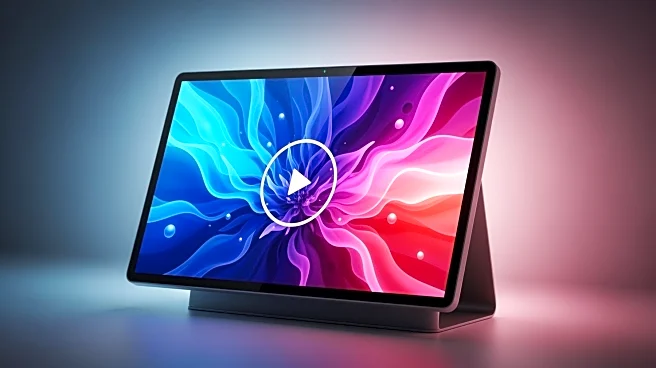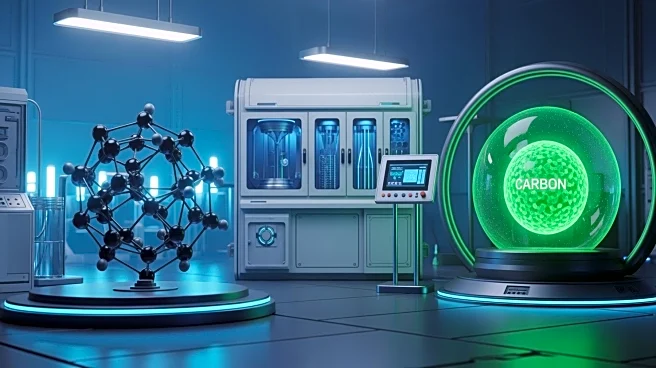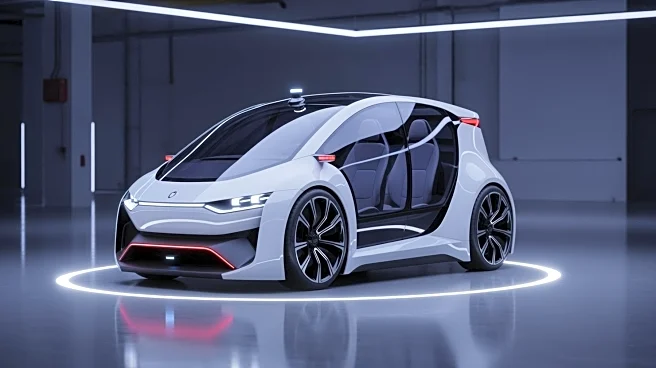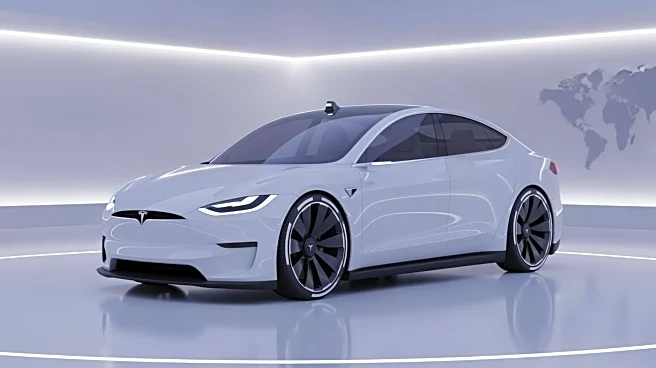What's Happening?
Researchers at the University of Uppsala in Sweden have developed a new type of color e-paper that can display high-resolution images and video while consuming minimal energy. This advancement addresses the limitations of traditional e-paper, which was
previously restricted to black and white and struggled with video display due to slow refresh rates. The new e-paper utilizes tungsten oxide nanodiscs, each about 560 nanometers, to achieve a resolution of 25,000 pixels per inch. This is significantly higher than the typical pixel density of hundreds per inch found in most smartphones. The technology allows for a range of colors and brightness levels, maintained without continuous power, by using brief electrical pulses to manipulate ions within the nanodiscs.
Why It's Important?
This development in e-paper technology could revolutionize the display industry by providing an energy-efficient alternative to traditional LED screens. The ability to display video with minimal energy consumption could lead to longer battery life for devices such as smartphones and tablets, which are integral to modern communication and entertainment. The high resolution and color capabilities of the new e-paper could also enhance the quality of digital content, making it more appealing for consumers and potentially reducing the environmental impact of electronic devices by lowering energy usage.
What's Next?
The next steps for this technology could involve scaling up the size of the e-paper displays to make them suitable for commercial use in consumer electronics. Further research and development may focus on optimizing the production process and reducing costs to make the technology accessible to a broader market. Industry stakeholders, including tech companies and manufacturers, may show interest in integrating this technology into their products, potentially leading to partnerships or investments in further development.
Beyond the Headlines
The introduction of this advanced e-paper technology could have broader implications for sustainability in the tech industry. By reducing energy consumption, it aligns with global efforts to decrease carbon footprints and promote environmentally friendly practices. Additionally, the technology could inspire further innovations in display technology, encouraging a shift towards more sustainable electronic devices.













